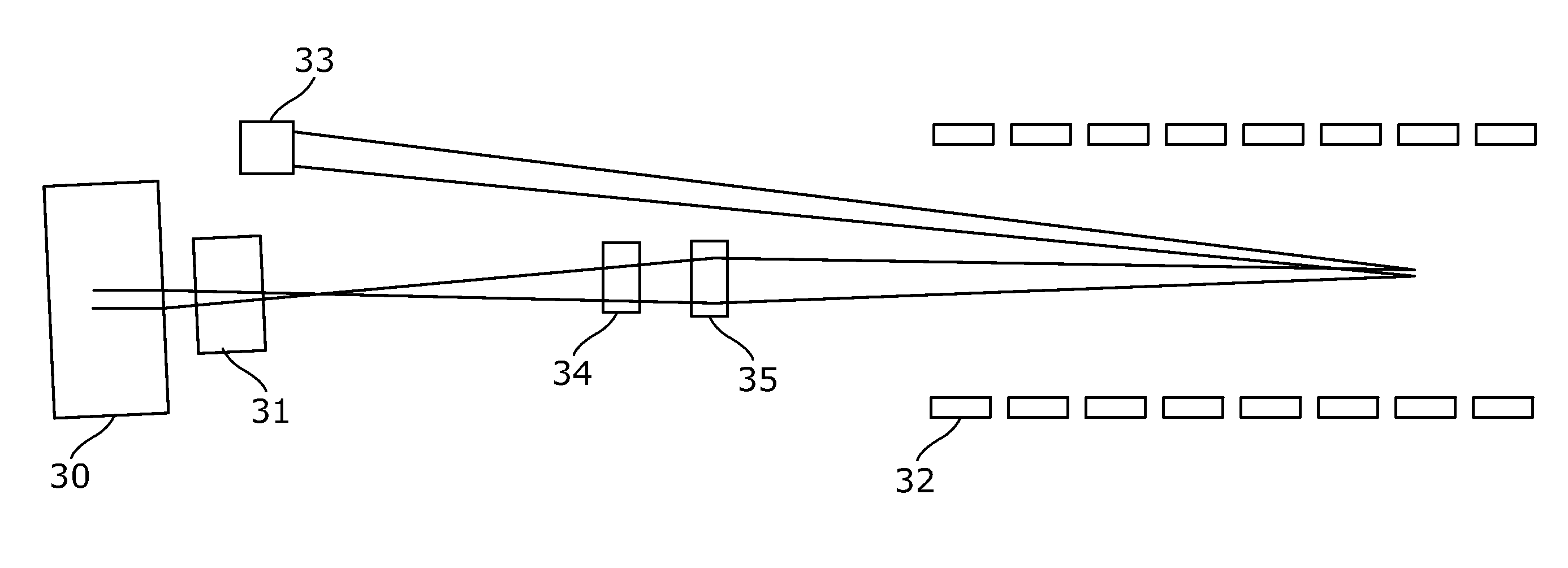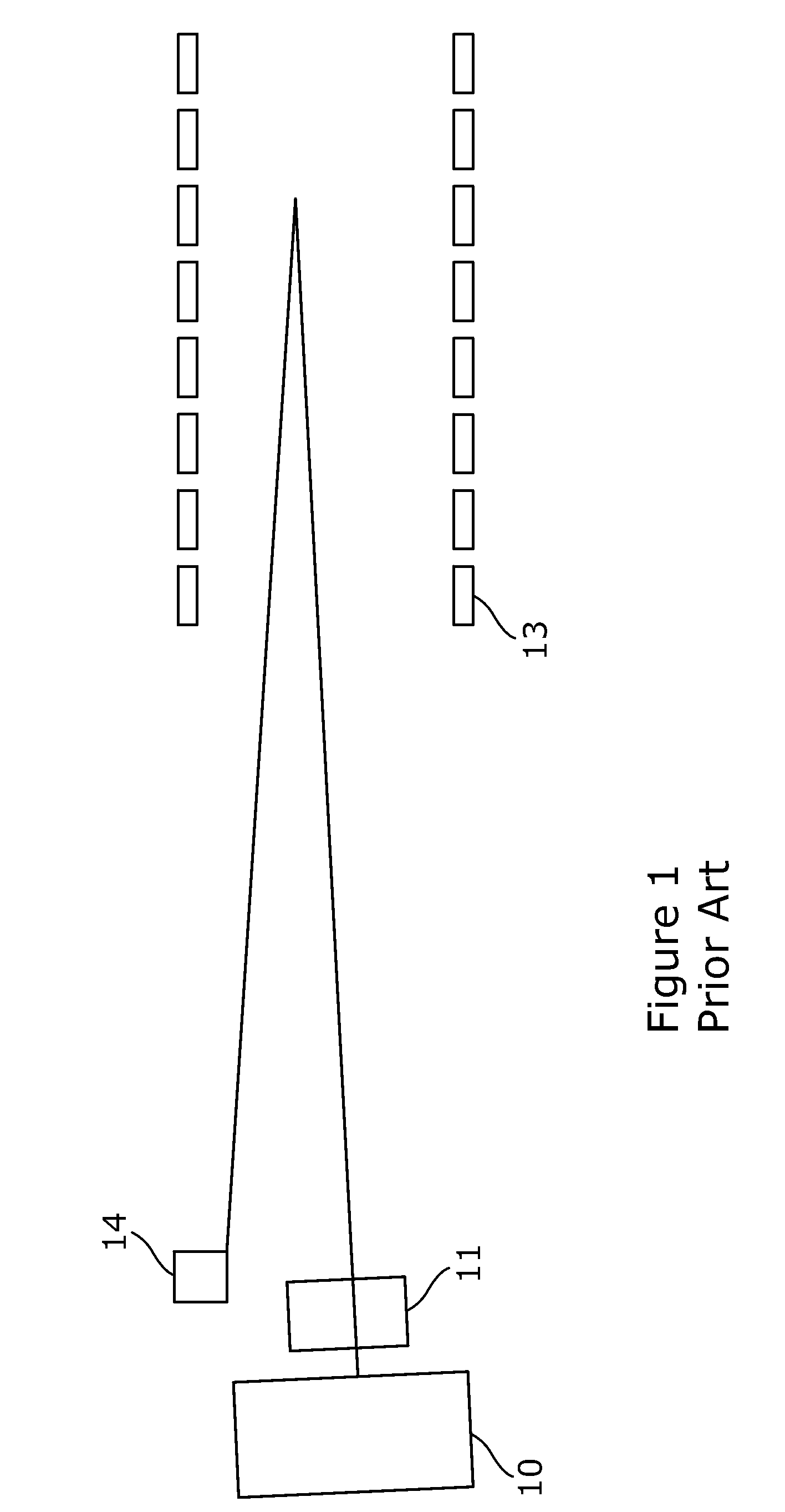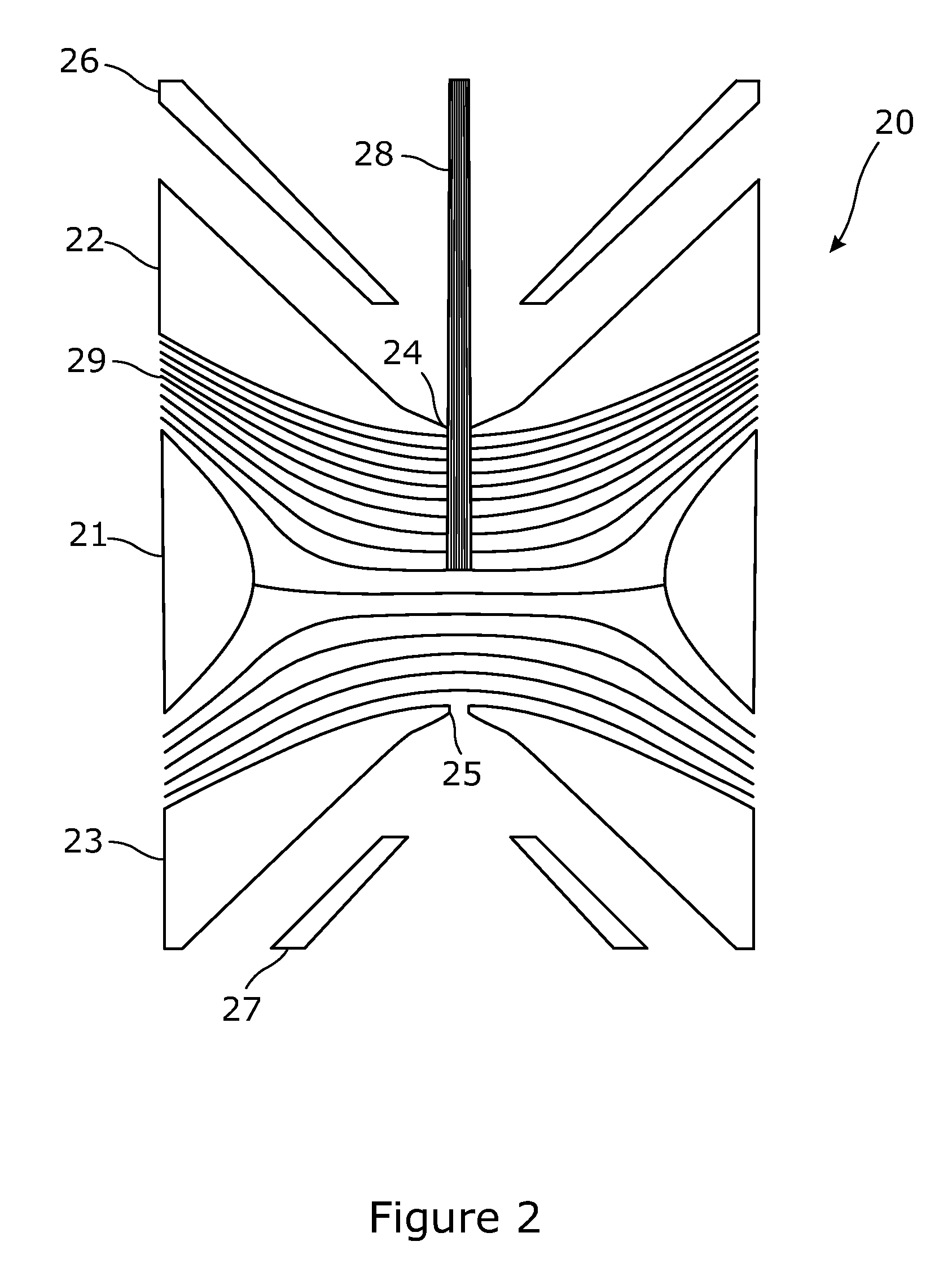ToF mass analyser with improved resolving power
a mass analyser and resolving power technology, applied in the field of timeofflight mass analysers, can solve the problem of not being able to improve the resolving power of tof analysers, and achieve the effects of reducing the spatial reducing the lateral divergence of the reflected ion group, and reducing the lateral spread of the ion group
- Summary
- Abstract
- Description
- Claims
- Application Information
AI Technical Summary
Benefits of technology
Problems solved by technology
Method used
Image
Examples
example 1
[0180]The current invention is illustrated below in relation to the trap-ToF method, but it is not only restricted to this category. On the contrary, the current invention may apply equally to all prior art methods of preparing ions for ToF analysis, and all systems having a ion pulsing means.
[0181]An ion source may be formed as a linear ion trap, with the electrodes formed from planar electrodes, arranged in planar formation as illustrated in FIG. 6, or in a square formation as shown inFIGS. 7a and 7b. For this example the ion source shown in FIGS. 7a and 7b was used.
[0182]This example compares Δt, that is peak width due to the arrival of species with a single m / z value at the detector for a ToF mass analyser comprising first and second lenses and an ion mirror having a lensing portion and a ToF mass analyser comprising an ion mirror having a lensing portion, but no first or second lens.
[0183]The ToF mass analyser configuration used for the simulation shown in FIGS. 8a to 8c is as ...
example 2
[0191]FIGS. 12a and 12b are computer simulations of ion trajectories in the xz plane from the ion mirror 122 via z lens 127 to the detector 123 in a ToF mass analyser. The ion mirror of FIG. 12a is an ion mirror of the prior art. The ion mirror of FIG. 12b includes lensing portion 128.
[0192]FIG. 12a shows that an ion mirror of the prior art provides a strong focusing effect: a cross over of ion paths is formed within the ion mirror, the ion beam is strongly divergent as it emerges from the ion mirror. In the example shown in FIG. 12a z lens 127 can be used to correct this divergence to achieve minimum radial spread of the ion beam in the z-direction and therefore improved temporal focusing at the detector 123. Although mass resolution is only determined by the temporal spread of an ion group at the detector, i.e. axial spread of the ion group in the x-direction, due to the divergence of the ion beam caused by an ion mirror of the prior art, lateral spread in the z-direction (and / or ...
example 3
[0194]A computer simulation was carried out using the ToF mass analyser model shown in FIG. 13. The model ToF comprises an LIT ion source 130; a first y lens z 134 and y lens 135; ion mirror 132 having a lensing portion (not shown); second z lens 136 and second y lens 137; and detector 133. This simulation shows the effect of position of the first lenses between the ion source 130 and the ion mirror 132, the distance 139 between the ion source.
[0195]The model is a 2000 mm long ToF (measured from the of the mid-point of the ion source to the back of the ion mirror). The distance 139 in the x-direction from the (mid point of the) ion source 130 to the front edge of the first lens was varied between 100 and 1100 mm, and the position in y correspondingly altered to keep the elements centred around the ion flight path. The distance between first z lens 134 and first y lens 135 was held constant, as were the positions of all other components. For each position optimisation was carried out...
PUM
 Login to View More
Login to View More Abstract
Description
Claims
Application Information
 Login to View More
Login to View More - R&D
- Intellectual Property
- Life Sciences
- Materials
- Tech Scout
- Unparalleled Data Quality
- Higher Quality Content
- 60% Fewer Hallucinations
Browse by: Latest US Patents, China's latest patents, Technical Efficacy Thesaurus, Application Domain, Technology Topic, Popular Technical Reports.
© 2025 PatSnap. All rights reserved.Legal|Privacy policy|Modern Slavery Act Transparency Statement|Sitemap|About US| Contact US: help@patsnap.com



